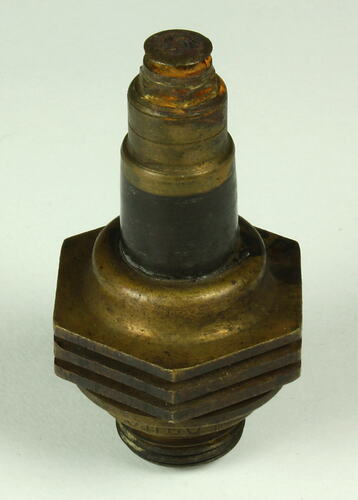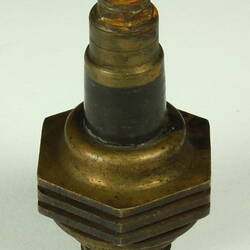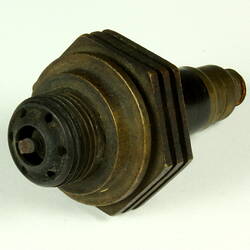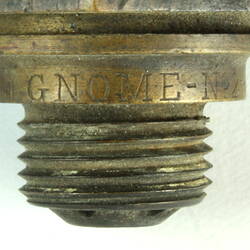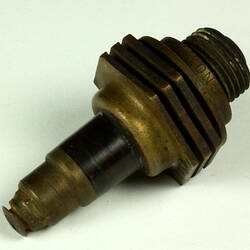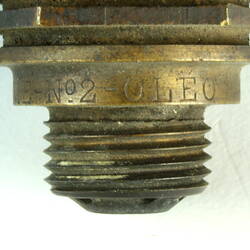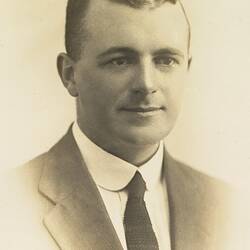Summary
Gnome No.2 pattern petrol internal combustion aero engine spark plug with finned body for more efficient cooling. Central contact makes gap with perforated base. Of a type fitted to a Gnome rotary aeroplane engines, made in France before 1919. Associated with a Sopwith type single-seat biplane built by the donor's son, Basil Watson, in July-October 1916.
Basil Watson was introduced to flying by Harry Hawker during an Australian publicity tour in early 1914, and subsequently travelled to England with Hawker, where he undertook flying lessons and worked as an engineer with the Sopwith Aviation Company. After the outbreak of WWI he was seconded to the British Government as a military test pilot, based at Brooklands aerodrome. He was severely injured in a crash after suffering an engine failure on take-off during a test flight in June 1915, and returned to Australia 12 months later, after being declared medically unfit for further military service. After constructing his own biplane from scratch at his parent's home in Elsternwick, in little more than 3 months, Watson piloted the aircraft on pioneering flights to Bendigo, western Victoria and Mount Gambier. He performed the first public aerial acrobatics flying demonstrations for crowds of spectators in Melbourne and country towns, and flew the first official airmail between Mt Gambier and Melbourne in February 1917. He was killed on 28th March 1917 when his aircraft crashed in shallow water in Port Phillip Bay, after a structural failure occurred as he performed an aerobatics display over Point Cook, Victoria. His death was the earliest recorded aviation fatality in Australia.
Presented to the Museum in 1919 by James Isaac Watson, father of Basil Watson, together with the Gnome aero engine (ST 011945) and other items salvaged from the wreckage of the crashed aircraft. This spark plug may have been a spare part.
Physical Description
Brass body with three hexagonal cooling fins and insulation built up of discs of mica. Plate with holes round central sparking point were designed to protect the insulation from dust and dirt.
More Information
-
Collection Names
-
Collecting Areas
-
Acquisition Information
Donation from James I. Watson, 28 Oct 1919
-
Place & Date Made
-
User
Mr Basil G. Watson, Victoria, Australia, 1916-1917
Believed to have been acquired by Basil Watson for use as a spare component on his Sopwith-type biplane, built in 1916. -
Inscriptions
Marked 'Gnome No.2 Oleo'
-
Classification
Air transport, Aero engines, Reciprocating propeller engine components
-
Category
-
Discipline
-
Type of item
-
Keywords
Aero Engine Components, Aero Engines, Aviation, Aviation Pioneers, Biplanes, Internal Combustion Engine Components, Internal Combustion Engines, Spark Plugs
